Growing Wild: the rescued rhino calves
It’s been a year since Kaziranga National Park was inundated by the worst floods to have hit Assam in over a decade. Among the 100-plus wild animal emergencies that CWRC (the Centre for Wildlife Rehabilitation and Conservation: the wildlife rescue, treatment and rehabilitation centre run by Wildlife Trust of India (WTI), the International Fund for Animal Welfare (IFAW) and the Assam Forest Department near Kaziranga) and its Mobile Veterinary Service units attended during the floods last year, were eight orphaned rhino calves that were rescued and brought to the centre to be hand-raised.
The simultaneous long-term care of eight rhinos has been a massive challenge for the team at CWRC. In addition to the efforts of the centre’s animal keepers and veterinarians, the tremendous support received from individual and corporate supporters, the Government of Assam, the Kaziranga National Park Authority and people from all walks of life across Assam has been critical.
“I remember that a group of children from a remote school had given up a mid-day meal to buy milk formula for the rhino calves”, says Dr Rathin Barman, WTI Joint Director and centre-in-charge, CWRC. “There have been several such touching expressions of support. We extend our heartfelt gratitude to the people of Assam and all well-wishers for their support and encouragement over the past year.”
When the rhino calves were first brought to CWRC they were stabilised at the centre’s Large Animal Nursery. Once they had recovered from their flood-related trauma and injuries they were shifted to a small outdoor paddock attached to the nursery. Gradually, having acclimatised to the outdoors, they were introduced to three larger paddocks with a natural stream running through them. This allowed the calves to wallow and play – an important part of their natural developmental behaviour.
“The calves have grown fast”, says Dr Panjit Basumatary, the lead veterinarian at CWRC. “Importantly, they’ve experienced all four seasons now, in an approximation of their natural habitat. It was touching to see how the younger calves huddled close to the older ones at night to keep warm during the winter, as they would have with their mothers. Now, as they play in the mud, enjoy the rain or nap together as they would in their natural environment, we feel a sense of satisfaction that they are making good progress towards a life in the wild.”
CWRC currently has ten rhino calves under care. The eight calves rescued last year had already bonded with an older calf that was rescued in 2015. Another under care four- to six-month-old calf displaced by the monsoon floods was rescued from Burhapahar and brought to the centre earlier this month during Kaziranga flood 2017.
Random Stories
4 Jun 2019 - 8:32pm |
AT Kokrajhar Bureau
Kokrajhar: Indefinite protests continues in Kokrajhar Music & Fine Arts College which entered its seventh day. The boycott strike carried out by teaching staff demanding provincialisation of the...
22 Apr 2012 - 10:21pm |
Anup Biswas
To take the stock of the on going Govt. Pig cum Poultry Farm project at Sontila 15 KM from Haflong, the Executive Member, incharge veterinary etc. Sri Parkanta Warisa etc. visited on Friday.
To...
8 Oct 2015 - 9:07am |
AT News Dimapur
The Kohima police seized two vehicles at interstate check gate at Khuzama on Wednesday. According to police, during routine frisking and checking of vehicles, they intercepted two bolero’s...
8 Apr 2012 - 3:41pm |
Anup Biswas
At least 150 houses of several villages like Kalanala , Disabra , Choto Larpheng and Panimur under Umrangso police station were totally damaged and injured 7 person including 3 women by the hail-...
Other Contents by Author
A neonate male rhino calf found alone in the wilderness of Agoratoli range is rescued by the Kaziranga forest staff and handed over to Centre for Wildlife Rehabilitation and Conservation (CWRC) the IFAW-WTI wildlife care facility near Kaziranga for further care on Monday,6th July 2015.
The India State of Forest Report 2013 released in 2014 stated that there has been a net decline of 627 sq kms in forest cover in north eastern states as compared to last assessment done in 2011. In the light of increasing fragmentation of forests and rising Human–Elephant conflict in India, five NGOs united under a MoU to raise £20 million for securing 100 elephant corridors in India by 2025. The occasion was marked by a fundraising event at Lancaster House in London that was hosted by Their Royal Highnesses, The Prince of Wales and The Duchess of Cornwall.The five non-governmental organisations are Elephant Family, International Fund for Animal Welfare (IFAW), IUCN Netherlands...
With increasing possibility of Kaziranga National Park being inundated by the raging Brahmaputra River, the Centre for Wildlife Rehabilitation and Conservation (CWRC) -- an IFAW-WTI run wildlife welfare centre -- has started pre-flood awareness campaign for the safety of wildlife in the fringe villages of this world heritage site.With support of Kaziranga Forest Authority, two awareness meetings for residents of six villages in the fringe areas have already been held in Central and Eastern Range of the park. More such meetings for wildlife protection during floods will be held to cover the entire Kaziranga –Karbi Anglong landscape. Previously during floods, the wildlife of the park...
Despite non stopped rhino poaching Kaziranga has reasons to celebrate. There has been steep rise in swamp deer population in the national park. Forest minister Etwa Munda told reporters in the world heritage site on Monday that the swamp deer population has gone up by 275. He revealed it a day after the census conducted jointly by forest department, Wildlife Trust of India and ONGC.
Two hand-raised Asian Wild buffaloes from the IFAW-WTI run Centre for Wildlife Rehabilitation and Conservation (CWRC) were today released in Burhachapori Wildlife Sanctuary, Assam.Agora, a male and Gerakati, a female were rescued in different circumstances in Kaziranga National Park when they were about month old age. Agora’s mother was found dead in 15th of December, 2012 while Gerakati was separated from its mother in 23rd of September, 2012. After rescue, both of them were placed at CWRC for further care and treatment.The release site was selected after a joint survey of CWRC IFAW-WTI team and Assam Forest Department, led by P. Sivakumar, Conservator of Forest, Assam Forest Department...
Two rhinos being hand-raised at the IFAW-WTI run Centre for Wildlife Rehabilitation and Conservation (CWRC) were released in Kaziranga National Park today. The two sub-adult male rhinos --Sohola and Baghmari -- have been under the observation of IFAW-WTI veterinarians and animal keepers since 2010 and 2012 respectively. S K Seal Sarma, DFO, Kaziraga said, “Sohola and Baghmari, the two male rhinos were rescued in different situations from Kaziranga National Park in 2010 and 2012 respectively. Both the rhinos were hand raised at CWRC and released with radio-collar and ear-tag for monitoring their movement for a period of time in Kaziranga. ”On December 19, 2010, Sohola was...
After rapid recuperation, the nine vultures in Tinsukia are flying freely in the sky a day after they were released by the forest officials on Friday. Before being released, veterinary doctors conducted a thorough medical check up in presence of the forest officials and several bird lovers who rescued them from the jaws of death at Chengeligaon in Dangori area. Then the Eastern Assam Mobile Veterinary Service unit of International Fund for Animal Welfare and Wildlife Trust of India released the vultures. These vultures are victims of carcass poisoning that resulted in death of 31 endangered vultures on March 4. The surviving vultures were under the observation of Eastern Assam MVS unit led...
A Himalayan Griffon vulture literally came back from the dead to live a new life in the wild, thanks to the never-say-die attitude of the dedicated team at the IFAW- WTI run Centre for Wildlife Rehabilitation and Conservation (CWRC). The vulture was released along with yet another rehabilitated vulture from CWRC at Bam Rajabari village in Sivsagar , at an awareness programme in the presence of stakeholders from the village where it was found.Barely a month ago, 50 endangered vultures were poisoned in a village in Sivsagar district of Assam, from where this solitary bird was rescued from the brink of death by the Mobile Veterinary Service (MVS) unit of CWRC that rushed to Bam-Rajabari...
The International Fund for Animal Welfare-Wildlife Trust of India (IFAW-WTI) with support from BTC and Assam Forest Department organised a daylong event ‘Paint Manas Green’ with the students of three different schools in the boundary wall of Himgiri Bodo Medium High and M.E. School at Rabanguri, near Manas National Park of Baksa district on Saturday,14th February 2015. This is a part of the Manas Pride Campaign with the objectives to bring an attachment and belongingness to the ecological diversity of Manas among the students by the organisation. About 600 students took part in the daylong event. Photo:Sanatan Deka/IFAW-WTI
Semelangso F.C., one of the popular village football club adjacent to a vulnerable elephant corridor in Karbi Anglong won "The Elephant Cup" Football tournament 2015, jointly organized by Wildlife Trust of India (WTI), Japan Tiger and Elephant Fund (JTEF), Karbi Anglong Autonomous Council (KAAC) along with Assam Forest Department (AFD) in Karbi Anglong district of Assam on Monday afternoon, 2nd February 2015.All together 32 village football teams participated in the two-weeklong tournament in Karbi Anglong district of Assam.Semelangso F.C. won by 3-2 against Rongdo Ingti F.C. in the final match at Koilamati village in Karbi Anglong district yesterday. WTI is organising...
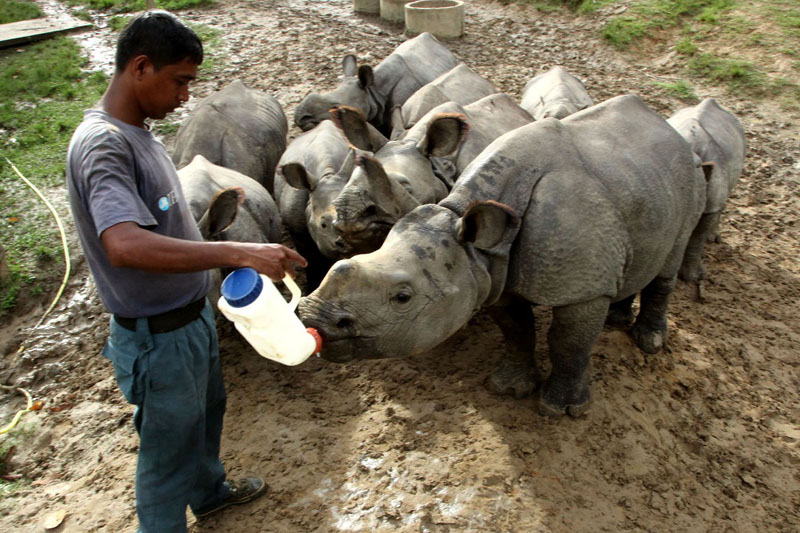
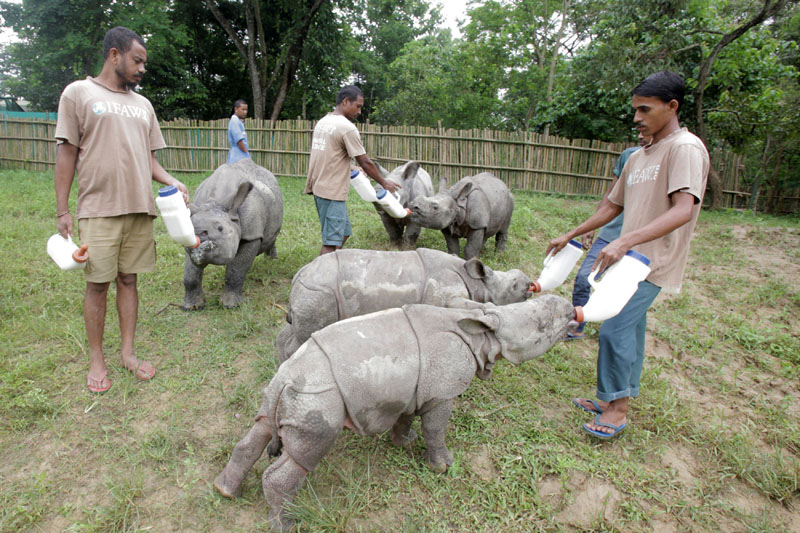
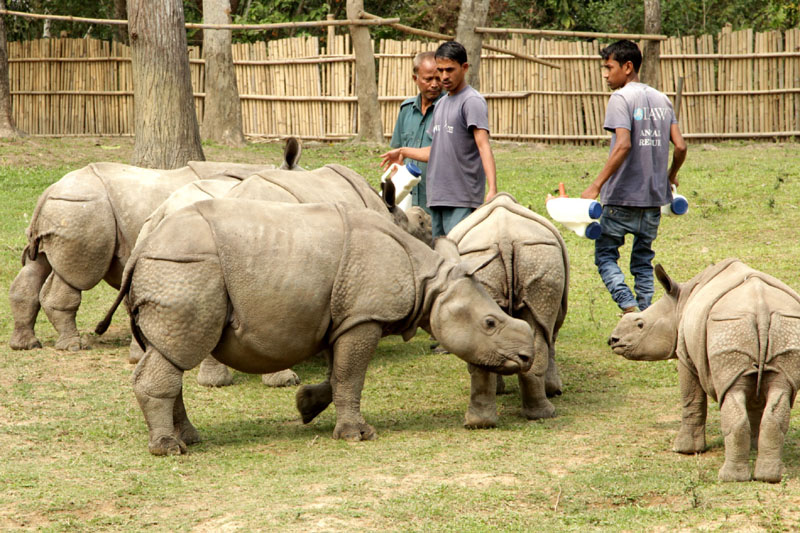

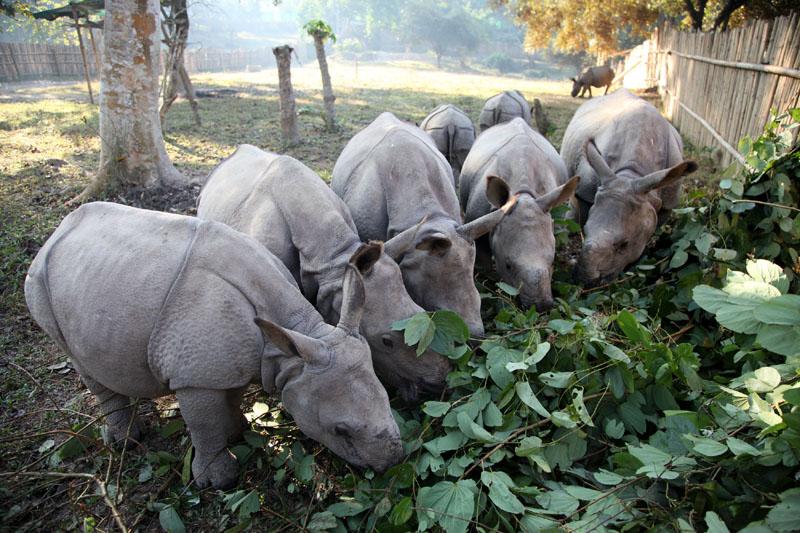
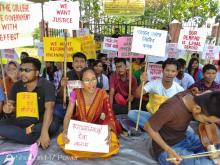



Add new comment